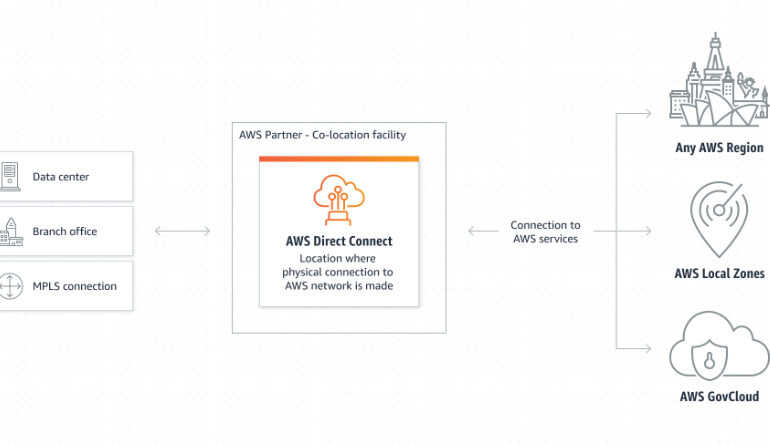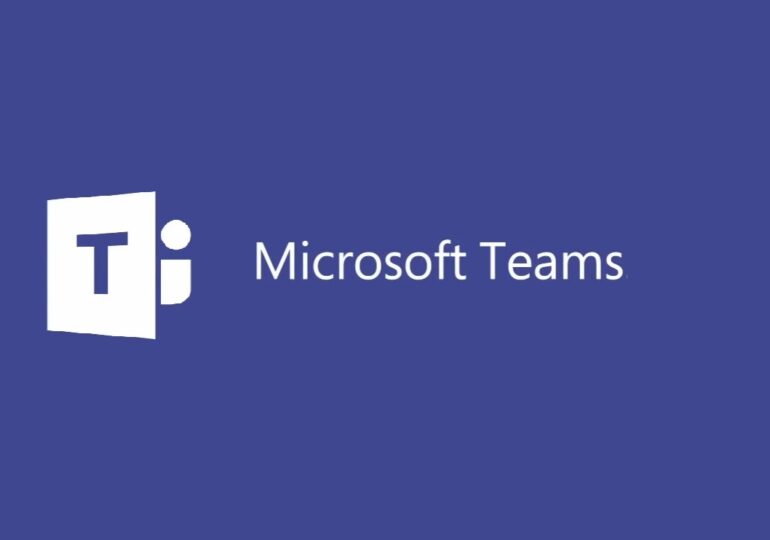What are Zero-Trust Network Access and Zero-Trust App Access?

Welcome to the world of Zero-Trust Network Access (ZTNA) and Zero-Trust App Access! In today’s digital landscape, where cybersecurity threats are on the rise, organizations are seeking robust solutions to protect their sensitive data and systems. This is where the concept of zero-trust comes into play.
Put simply, zero-trust is a security approach that challenges the age-old belief that everything inside an organization’s network can be trusted. In a zero-trust model, no user or device is automatically granted access to resources. Instead, every request is fully authenticated and authorized, regardless of the user’s location or network. This means that even trusted users and devices must go through rigorous checks before gaining access.
Within the zero-trust framework, ZTNA and Zero-Trust App Access are two essential components. ZTNA focuses on securing the network perimeter by authenticating and authorizing users before granting them access to internal resources. On the other hand, Zero-Trust App Access takes a granular approach, securing individual applications and providing fine-grained access control.
In this article, we will explore in detail what zero-trust network access and zero-trust app access entail, their benefits, and how they can enhance your organization’s cybersecurity posture. Let’s delve into the world of zero-trust and discover how it can revolutionize your approach to security.
In this article we discover the following key information:
- The concept of trust in traditional network and application access
- Understanding the principles of Zero-Trust Network Access
- Benefits of implementing Zero-Trust Network Access and Zero-Trust App Access
- Key components of Zero-Trust Network Access and Zero-Trust App Access
- Implementing Zero-Trust Network Access and Zero-Trust App Access in your organization
- Common challenges and considerations when adopting Zero-Trust Network Access and Zero-Trust App Access
- Best practices for securing network and application access with Zero-Trust principles
The concept of trust in traditional network and application access
In traditional network and application access, trust was primarily based on the assumption that everything inside the organization’s network could be trusted. Once a user or device gained access, they were typically given broad permissions to access various resources within the network or applications. This approach, known as the perimeter-based security model, was built on the belief that if someone was inside the network, they were inherently trustworthy.
However, with the increasing number of sophisticated cyber threats, it has become evident that this trust-based approach is no longer sufficient. Attackers can easily exploit vulnerabilities, compromise trusted systems, and move laterally within the network, making it challenging to detect and prevent unauthorized access to sensitive data.
To address these vulnerabilities, the zero-trust model emerged as a revolutionary security approach. Unlike the traditional trust-based model, zero-trust assumes that no user or device should be automatically trusted, regardless of their location or network. Every access request is treated as potentially malicious and undergoes a comprehensive authentication and authorization process before being granted access to resources.
By eliminating the inherent trust placed on users and devices, organizations can significantly reduce the attack surface and mitigate the risk of unauthorized access and data breaches. Zero-trust network access and zero-trust app access are two key components that help organizations implement this paradigm shift in their security strategy.
Understanding the principles of Zero-Trust Network Access
Zero-Trust Network Access (ZTNA) is a security framework that focuses on securing the network perimeter by adopting a zero-trust approach. The core principle of ZTNA is to verify and authorize every user and device, regardless of their location, before granting them access to internal resources.
Traditionally, remote access to internal resources was facilitated through Virtual Private Networks (VPNs). However, VPNs often provide unrestricted access to the entire network once authenticated, making them vulnerable to lateral movement by attackers who have already gained access.
ZTNA takes a different approach by providing secure access to specific resources on a need-to-know basis. Instead of granting broad network access, ZTNA dynamically establishes secure connections between users and resources, based on their identity, device posture, and contextual factors. This granular access control significantly reduces the attack surface and prevents unauthorized lateral movement within the network.
By implementing ZTNA, organizations can achieve several benefits. Firstly, it enhances security by ensuring that only authorized users and devices can access internal resources. Secondly, it simplifies network architecture by reducing the reliance on traditional VPNs and network segmentation. Lastly, it improves user experience by providing seamless and secure access, regardless of the user’s location.
Benefits of implementing Zero-Trust Network Access and Zero-Trust App Access
Implementing Zero-Trust Network Access and Zero-Trust App Access can bring numerous benefits to organizations looking to enhance their cybersecurity posture. Some of the key benefits include:
- Improved security: By adopting a zero-trust approach, organizations can significantly reduce the attack surface and mitigate the risk of unauthorized access and data breaches. Every access request is thoroughly authenticated and authorized, ensuring that only authorized users and devices can access sensitive resources.
- Granular access control: Zero-trust models provide fine-grained access control, allowing organizations to grant access to specific resources on a need-to-know basis. This reduces the risk of lateral movement within the network and limits the potential damage in case of a breach.
- Simplified network architecture: Zero-trust eliminates the complexity associated with traditional network architectures, such as VPNs and network segmentation. It provides a more streamlined and secure approach to network access, reducing the need for multiple security solutions.
- Enhanced user experience: Zero-trust models prioritize user experience by providing seamless and secure access, regardless of the user’s location or network. Users can securely access resources from any device, improving productivity and flexibility.
- Compliance and regulatory adherence: Implementing zero-trust access controls can help organizations meet compliance requirements and adhere to regulatory standards. By enforcing strict access policies and auditing access events, organizations can demonstrate their commitment to data security and privacy.
By leveraging the benefits of Zero-Trust Network Access and Zero-Trust App Access, organizations can strengthen their security posture, protect sensitive data, and stay ahead of evolving cyber threats.
Key components of Zero-Trust Network Access and Zero-Trust App Access
Zero-Trust Network Access and Zero-Trust App Access comprise several key components that work together to enforce the zero-trust security model. These components ensure that every access request is thoroughly evaluated and authorized before granting access to resources.
1. Identity and Access Management (IAM)
IAM plays a crucial role in zero-trust models, as it is responsible for verifying and managing user identities and access privileges. IAM solutions enforce strong authentication methods, such as multi-factor authentication (MFA), to ensure that users are who they claim to be. Additionally, IAM solutions provide centralized control over access policies, allowing organizations to define and enforce granular access controls based on user roles and attributes.
2. Contextual Access Policies
Contextual access policies evaluate various contextual factors, such as user location, device posture, time of access, and network conditions, to determine access privileges. By considering these factors, organizations can make more informed decisions about granting or denying access to resources. For example, if a user attempts to access sensitive data from an unfamiliar location or device, the access policy may require additional authentication steps or deny access altogether.
3. Secure Access Gateways
Secure access gateways act as intermediaries between users and resources, ensuring secure and authorized access. These gateways establish secure connections and enforce access policies based on user identities, device posture, and contextual factors. They also provide additional security features, such as encryption and threat detection, to protect data in transit.
4. Continuous Monitoring and Analytics
Continuous monitoring and analytics play a crucial role in zero-trust models by providing real-time visibility into user access events and detecting anomalies or suspicious activities. By monitoring access events, organizations can quickly identify and respond to potential security incidents. Analytics tools can also help organizations gain insights into access patterns and user behaviour, helping to fine-tune access policies and improve overall security.
By integrating these components into their security infrastructure, organizations can establish a robust zero-trust network access and zero-trust app access framework. This approach ensures that every access request is thoroughly evaluated and authorized, minimizing the risk of unauthorized access and data breaches.
Implementing Zero-Trust Network Access and Zero-Trust App Access in your organization
Implementing Zero-Trust Network Access and Zero-Trust App Access requires careful planning and consideration. Here are some steps organizations can take to successfully adopt a zero-trust security model:
- Assess current security posture: Conduct a comprehensive assessment of your organization’s current security infrastructure, policies, and practices. Identify any vulnerabilities and areas where the traditional trust-based approach may be inadequate.
- Define access policies: Define access policies based on the principle of least privilege. Determine who needs access to specific resources and establish access controls accordingly. Consider contextual factors, such as user roles, device posture, and network conditions, when defining access policies.
- Implement strong authentication methods: Enforce strong authentication methods, such as multi-factor authentication (MFA), to verify user identities. MFA adds an extra layer of security by requiring users to provide additional proof of identity, such as a fingerprint or a one-time password.
- Leverage identity and access management (IAM) solutions: Implement IAM solutions to centralize user identity management and access control. IAM solutions provide a single source of truth for user identities and enable organizations to enforce granular access controls based on user roles and attributes.
- Deploy secure access gateways: Deploy secure access gateways to establish secure connections between users and resources. These gateways enforce access policies and provide additional security features, such as encryption and threat detection, to protect data in transit.
- Monitor and analyze access events: Implement continuous monitoring and analytics tools to gain real-time visibility into user access events. Monitor for anomalies or suspicious activities and respond promptly to potential security incidents.
- Educate and train users: Educate and train users on the principles of zero-trust and the importance of secure access practices. Foster a security-conscious culture within the organization to ensure that users understand their role in maintaining a secure environment.
By following these steps, organizations can successfully implement Zero-Trust Network Access and Zero-Trust App Access, significantly enhancing their cybersecurity posture and protecting sensitive data and resources.
Common challenges and considerations when adopting Zero-Trust Network Access and Zero-Trust App Access
While implementing Zero-Trust Network Access and Zero-Trust App Access can bring significant security benefits, organizations may encounter certain challenges and considerations during the adoption process. Here are some common challenges and ways to address them:
- Legacy systems and applications: Legacy systems and applications may not be compatible with the zero-trust model, making it challenging to implement granular access controls. Organizations should evaluate the feasibility of upgrading or replacing legacy systems to align with zero-trust principles. Alternatively, they can consider implementing additional security measures, such as network segmentation and micro-segmentation, to mitigate the risks associated with legacy systems.
- User experience: Zero-trust models should prioritize user experience to ensure seamless and secure access. However, implementing additional authentication steps or access controls may introduce friction and impact user productivity. Organizations should carefully balance security requirements with user experience considerations, leveraging technologies such as single sign-on (SSO) and adaptive authentication to provide a seamless user experience while maintaining strong security.
- Integration with existing security infrastructure: Integrating Zero-Trust Network Access and Zero-Trust App Access with existing security infrastructure can be complex. Organizations should assess their current security stack and identify any integration challenges. Working with experienced security vendors or consultants can help ensure a smooth integration process and minimize disruptions to existing systems.
- Change management and user education: Adopting a zero-trust security model requires a cultural shift within the organization. Users must understand the principles of zero-trust and the importance of secure access practices. Organizations should provide comprehensive training and education programs to ensure that users are aware of the changes and actively participate in maintaining a secure environment.
By addressing these challenges and considerations, organizations can successfully navigate the adoption process and reap the full benefits of Zero-Trust Network Access and Zero-Trust App Access.
Best practices for securing network and application access with Zero-Trust principles
Implementing Zero-Trust Network Access and Zero-Trust App Access effectively requires adherence to several best practices. Here are some key recommendations to ensure the successful implementation and maintenance of a zero-trust security model:
- Adopt a phased approach: Implementing zero-trust principles across the entire organization in one go can be overwhelming. Instead, adopt a phased approach, starting with critical resources and gradually expanding the implementation. This approach allows for better resource allocation, testing, and fine-tuning of access policies.
- Regularly review and update access policies: Access policies should be regularly reviewed and updated to align with changing business requirements and security threats. Conduct periodic reviews to ensure that access privileges are still necessary and appropriate for users. Remove unnecessary access privileges promptly to minimize the attack surface.
- Leverage automation and orchestration: Automation and orchestration technologies can streamline the implementation and management of zero-trust models. Use automation to enforce access policies, manage user identities, and detect and respond to security incidents. This reduces the reliance on manual processes and minimizes the risk of human error.
- Implement strong authentication methods: Strong authentication methods, such as multi-factor authentication (MFA), should be enforced for all users. MFA adds an extra layer of security by requiring users to provide additional proof of identity, making it harder for attackers to impersonate legitimate users.
- Regularly monitor and analyze access events: Continuous monitoring and analysis of access events are crucial for detecting anomalies and potential security incidents. Implement real-time monitoring solutions that provide visibility into access events, user behaviour, and potential threats. Regularly review access logs and investigate any suspicious activities promptly.
- Regularly educate and train users: User education and training play a vital role in maintaining a secure environment. Regularly conduct security awareness programs to educate users about the principles of zero-trust and the importance of secure access practices. Provide clear guidelines and best practices to help users understand their role in maintaining a secure network and application environment.
By following these best practices, organizations can ensure the effective implementation and ongoing maintenance of zero-trust network access and zero-trust app access, strengthening their security posture and protecting sensitive data and resources.
Conclusion
Implementing Zero-Trust Network Access and Zero-Trust App Access requires the utilization of various tools and technologies that facilitate secure access and enforce zero-trust principles. Work with a trusted and experienced vendor to secure your network and perimeter and guard your assets today!







































